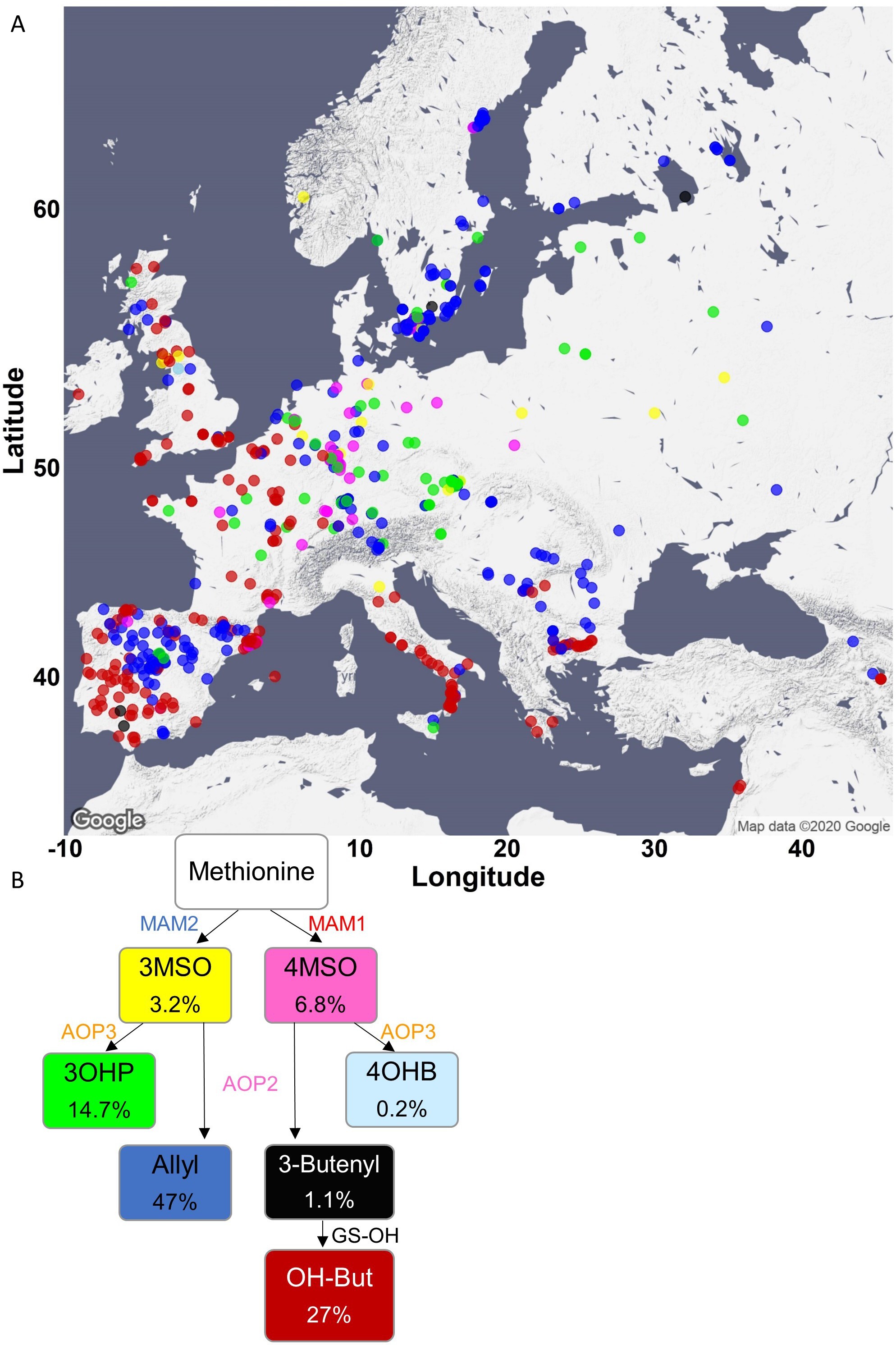Glucosinolates synthesis and catabolism
Glucosinolates are small plant secondary (or specialized depending on your preference) metabolites that help a plant exist in a complex environment. This includes providing toxicity to insects and pathogens and influencing abiotic resistance to drought. These biological roles extend to having a major impact on human nutrition by being both anti-cancer and anti-ulcer compounds in Brassica vegetables like Cauliflower and Kale.
This multi-faceted role means that glucosinolates are critical to the ecology and evolution of the plants in which they exist. The lab has identified the genes that control glucosinolate variation across the Brassicas and influence fitness in the field. We are now working to extend this to try and understand the molecular and ecological mechanisms that shape this variation. This has two main facets.
The first approach is to develop a population to ask a simple question "What are all of the ecological components that glucosinolates interact with to influence the fitness of a single plant species?". To accomplish this, we are using CRISPR to genome engineer all of the known genetic variation in glucosinolates within the Model species Arabidopsis thaliana. This will create a population of specifically edited lines that only vary for the glucosinolates. We will share these lines as widely as possible and simultaneously conduct field trials and specific assays on biotic and abiotic phenotypes in this line. In combination, this will create a database of traits/phenotypes and how each and every major glucosinolate polymorphisms alters the plant fitness in the face of that stress (100s of individual pathogens, individual insects, different abiotic stresses, etc). This database can then be use to create the first ever empirical model of how a single trait, glucosinolates, influences the fitness of the plant in face of a environment vastly too complex for us to ever fully approximate.
In a complement to the ecological mechanisms, we will use this same population of genotypes as a beginning point to extend our analysis of the molecular mechanisms by which the glucosinolates allow the plant to respond to each of the ecological parameters. The classical idea is that glucosinolates are simply isothiocyanates that generically attack proteins and have no structural or mechanistic specificity. The broader community has started to show that this model is untenable and that there is vastly more mechanistic insight that allows each individual glucosinolate to provide a unique role. We have shown that the plant has unique transcriptional responses to each individual glucosinolate suggesting that they can function as signaling molecules. We are beginning to investigate the mechanistic processes by which these signaling properties arise to understand the importance of and evolutionary basis for this unexpected property of specialized metabolites.

Fig. 4 from Katz et al. 2021 https://elifesciences.org/articles/67784
Phenotypic classification based on glucosinolate (GSL) content.
(A) Using the GSL accumulation, each accession was classified to one of seven aliphatic short-chained GSL chemotypes (B) The coloring scheme with functional GSL enzymes in the aliphatic GSL pathway is shown with the percentage of accessions in each chemotypes.